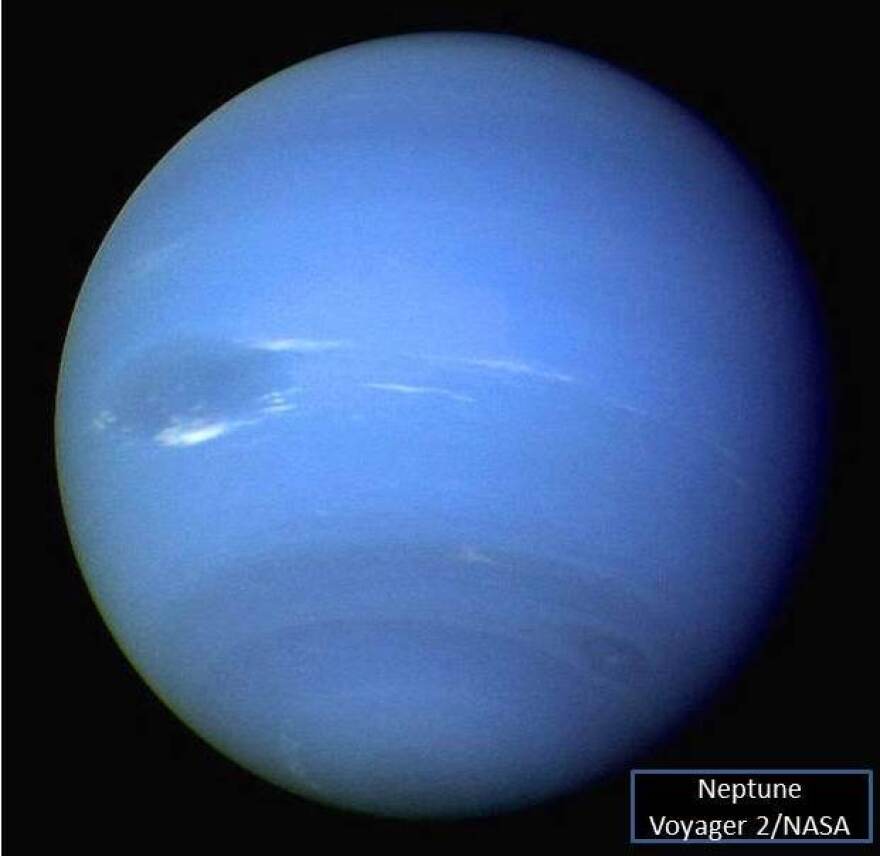Neptune
"BORING!" said the 5-year-old of the little blue dot appearing through the telescope…
Perhaps at first glance, but considering that Neptune, the 8th planet, is 30 times farther from the Sun than Earth, it’s actually an amazing sight. At approximately 2.8 billion miles away, it cannot be observed with the un-aided eye. Seeing the disk and color requires a moderately sized telescope, and a keen-eyed astronomy buff.
Neptune was discovered by telescope in 1846 using mathematical calculations. Scientists predicted the planet’s existence from its gravitational influences on Uranus.
Named after the Roman god of the sea, Neptune is the fourth largest planet in the Solar System by diameter and the third largest by mass. Referred to as an “ice giant,” its atmosphere is composed primarily of hydrogen, helium and “ices” of water, ammonia and methane. The methane accounts for the planet’s distinctive blue appearance. Neptune’s outer atmosphere is one of the coldest places in the Solar System, with temperatures at its cloud tops approaching minus 360 degrees Fahrenheit.
Neptune has been visited by one spacecraft, Voyager 2, which did a fly-by on August 25th, 1989. Voyager 2 was able to observe the weather patterns of Neptune’s atmosphere. These patterns are driven by the strongest sustained winds of any planet in the Solar System, with recorded wind speeds as high as 1,300 mph. The fly-by also confirmed a faint and fragmented ring system around the planet.
Neptune will be closest to Earth on August 29th. Around that date, in telescopes, it will appear at its brightest and largest - a perfect opportunity to attend an astronomy outreach event and view what is really a rather INTERESTING, not boring, planet.
You’ve been listening to “Western Slope Skies,” produced by members of the Black Canyon Astronomical Society. I’m Joyce Tanihara.



